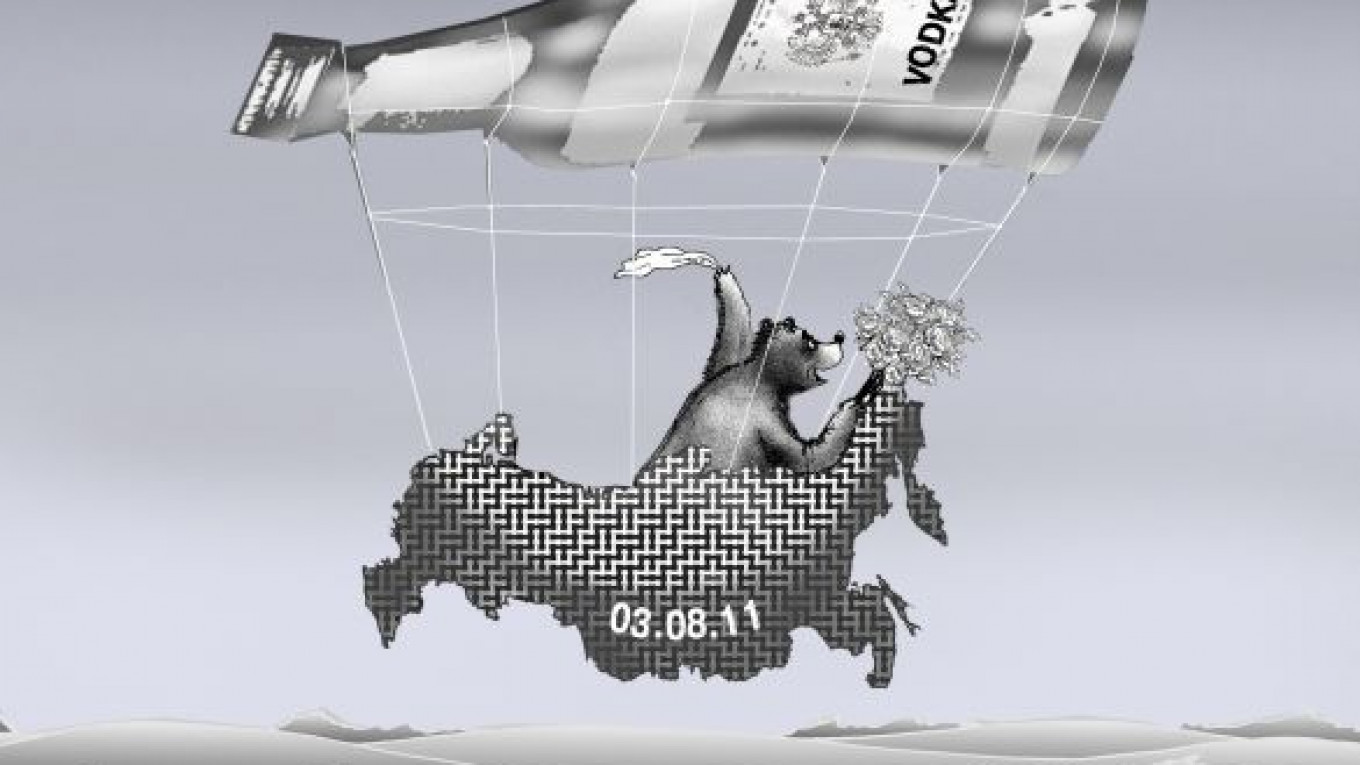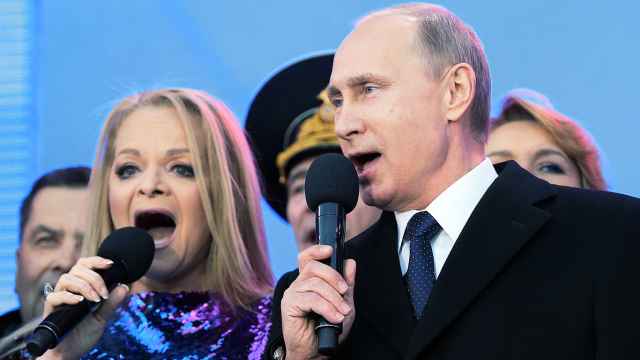For women, this weekend’s International Women’s Day holiday is supposed to be a time to receive gifts and affection from the men in their lives. For the country, it means a welcome three-day weekend. But for all too many people, the holiday also offers an excuse to drink.
The good news is that the national drinking problem isn’t quite as bad as many thought. The World Health Organization concluded in a report last month that Russia is apparently no longer the world leader in per capita alcohol consumption. In fact, at 15.7 liters of pure alcohol per capita, Russia is not even on the medal stand of the global drinking games, just beating out Ukraine (15.6 liters) for fourth place behind bronze medalist Hungary (16.3 liters), the Czech Republic (16.5 liters) in second place, and the world-champion guzzlers from Moldova, who quaff an astounding 19.2 liters of pure alcohol per year.
But do those numbers actually mean anything? How much do Russians really drink?
Simple aggregate national statistics belie a world of complexity in terms of who is drinking, what they are drinking, how much, how frequently, and what impact these patterns have on public health. Digging deeper into the WHO’s “Global Status Report on Alcohol and Health,” one finds reasons for greater concern — rather than complacency — for Russian health.
For one, the report is based on 2005 statistics, which are somewhat dated. Indeed, the WHO’s figure of 15.7 liters is quite a bit more rosy than the official figure from 2008 of 18 liters that President Dmitry Medvedev and the Health and Social Development Ministry have been using as a baseline for their anti-alcoholism initiatives. Yet even using the more optimistic WHO statistics, we can go deeper.
Since heavy drinking in Russia and elsewhere is primarily (though not exclusively) a male-dominated activity and the implications for health are consequently more dire for men than women, let’s look at the WHO’s alcohol consumption figures for men of drinking age (15 and older) who are not abstainers. The WHO estimates that the everyday Ivan-in-the-street is drinking, on average, the equivalent of 35.4 liters of pure alcohol per year. But what does that even mean?
Do you know how much alcohol you drink in a given week? Helpfully, the WHO data allows us to translate gross consumption figures. If we think in terms of the standard half-liter bottle of 80-proof (40 percent alcohol) vodka, conventional 750 ml bottles of wine at 12 percent alcoholic content, and the international standard-size 0.35 liter bottles of 5 percent alcohol beer, the WHO data paints the following picture:
Every week, the average drinking Russian man downs 13 bottles of beer and more than two bottles of vodka. That’s the average. Week in, week out, two bottles of vodka and 13 bottles of beer for every drinking man across Russia. Or think of it this way: almost a third of a bottle of vodka and two beers every single day.
The Ukrainians do better than their eastern neighbor at 37.4 liters per year. They drink virtually the same amount of vodka and beer, but then add to it a half-bottle of wine every week. For comparison, the WHO data suggests that drinking American men guzzle 20 liters annually. On average that means three-fifths of a bottle of vodka, two-thirds of a bottle of wine, and 11 1/2 beers in a week.
How does this picture compare with the other primary contenders in the drunk-olympics? Well, Czech (26.6 liters annually) and Hungarian (29.5 liters) men tend to drink more beer and wine than much more potent distilled spirits like vodka. Still, every week, a typical Czech drinking man will down the equivalent of two-thirds a bottle of vodka, a full bottle of wine, and 16 beers. His counterpart in Hungary drinks roughly the same two-thirds a bottle of vodka, but drinks 2 1/2 bottles of wine in addition to 11 beers.
What about the supposed world-champion Moldovans? Given its long history of viniculture, the Moldovan drinking culture is more akin to the steady wine-drinking nations of the Mediterranean: Moldovans drink more wine than vodka, there is a smaller percentage of teetotalers, and women make up more of the overall consumption statistics. As a consequence, the average Moldovan man drinks only 32 liters of alcohol per year — quite a bit less than his counterparts in Russia and Ukraine. The average man in Moldova drinks 10 3/4 bottles of beer and 2 1/2 bottles of wine every week, but only one bottle of vodka.
The difference between drinking patterns between Moldova and its vodka-swilling Slavic neighbors is telling. While the average male life expectancy in Russia is 59.5 years and 62.3 years in Ukraine, in Moldova it is 67.4. Demographers and health experts are in wide agreement that not only is the quantity of alcohol consumed an important influence on health, but so too is the type of alcohol and the manner in which it is consumed. Instead of steady, measured consumption, Russians binge to excess.
Rather than milder wines, Russians drink more potent, higher-alcohol vodka. Rather than scoffing at the Moldovans for ranking first in the WHO report, Russians could actually learn something from them. Indeed, in terms of the impact of drinking patterns on population health, it would seem that one of the best things the average Russian man could do would be to put down one of his two weekly bottles of vodka and pick up a bottle of wine instead. Or better yet, put down one of the bottles and don’t pick up anything else at all as we celebrate International Women’s Day.
Mark Lawrence Schrad is an assistant professor of political science at Villanova University in Pennsylvania.
A Message from The Moscow Times:
Dear readers,
We are facing unprecedented challenges. Russia's Prosecutor General's Office has designated The Moscow Times as an "undesirable" organization, criminalizing our work and putting our staff at risk of prosecution. This follows our earlier unjust labeling as a "foreign agent."
These actions are direct attempts to silence independent journalism in Russia. The authorities claim our work "discredits the decisions of the Russian leadership." We see things differently: we strive to provide accurate, unbiased reporting on Russia.
We, the journalists of The Moscow Times, refuse to be silenced. But to continue our work, we need your help.
Your support, no matter how small, makes a world of difference. If you can, please support us monthly starting from just $2. It's quick to set up, and every contribution makes a significant impact.
By supporting The Moscow Times, you're defending open, independent journalism in the face of repression. Thank you for standing with us.
Remind me later.






